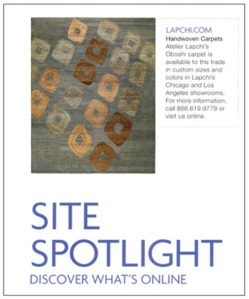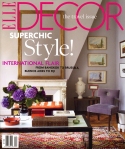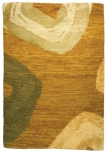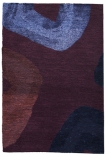“It is better to have lived one day as a Tiger, than live a thousand years as a sheep.” – Tibetan Proverb
Inspired by a rare late 19th century silk Ikat velvet from the Bukhara region of Uzbekistan, Lapchi’s Tiger Ikat, was designated for October’s “Site Spotlight” by the editors of ELLE DECOR.
The Uzbekistani areas of Bukhara and Samarkand were jewels on the famous “Silk Road”, a meandering trans-continental trade route connecting Asia with southern Europe. Tiger Ikat silk velvets may have traditionally originated in China or Russia before the style re-emerged in Bukhara. This distinctive tiger pelt velvet was a “Baghmal”.
Uzbek homes were decorated almost exclusively in textiles with comparatively little furniture. In Central Asia “cloth made the man” as luxury textiles were indicative of social status – the male ruling elite and rich merchant class often used Ikat textiles as gifts in negotiations. Carpets, walls, bolsters, pillows, throws, window and door openings were adorned with layers of patterned Ikat and embroidery. The Chapan, a highly decorative garment, was layered over tunics and trousers, often in sumptuous silk velvet Ikat patterns.
IKAT is a labor intensive multiple step process in which the warp (vertical) and weft threads (horizontal) are dyed and patterned before weaving. The warp threads are stretched over a wood frame and patterned by applying dye resistant layers of wrapped cotton, wax or rice paste to the threads. Layers of “resist” are applied before each dye bath, protecting the emerging pattern from successive colors. Each time threads are bound and dyed they are replaced on the frame in the same order from left to right to check patterning. The finished threads are then transferred to a loom and woven. The Bukhara Ikat textiles are often “Warp Faced” – warp threads alone are patterned with color. Double Ikat is patterned on both the warp and weft.
In a technique similar to traditional Tibetan-Nepalese pile weaving, Ikat silk velvets employ a wire and knife cut to form pile height. Two sets of vertical warp threads are traditional. Layered on top of each other on the frame, the first warp layer is a backing and provides structure while the second warp layer is patterned. The patterned warp threads are intentionally longer in length for their height above the structured layer will become the pile. To raise the pattern warps for pile cutting, a thin wire is inserted between two rows of horizontal width running weft threads during the weaving process. Every few rows, another wire is inserted with the weft, the rows are battened down, and the raised weft thread loops are cut free from the wire beneath. The velvet pile is formed and a lush and elegant surface is created.
Lapchi’s Ikat designs embody a culture for whom vibrant colors, patterns and a developed textile culture was part of everyday existence. As 2010 is the year of the Tiger, Lapchi’s Tiger Ikat carpet in particular, offers a timely walk on the wild side….










 Posted by Lapchi, LLC
Posted by Lapchi, LLC 
















